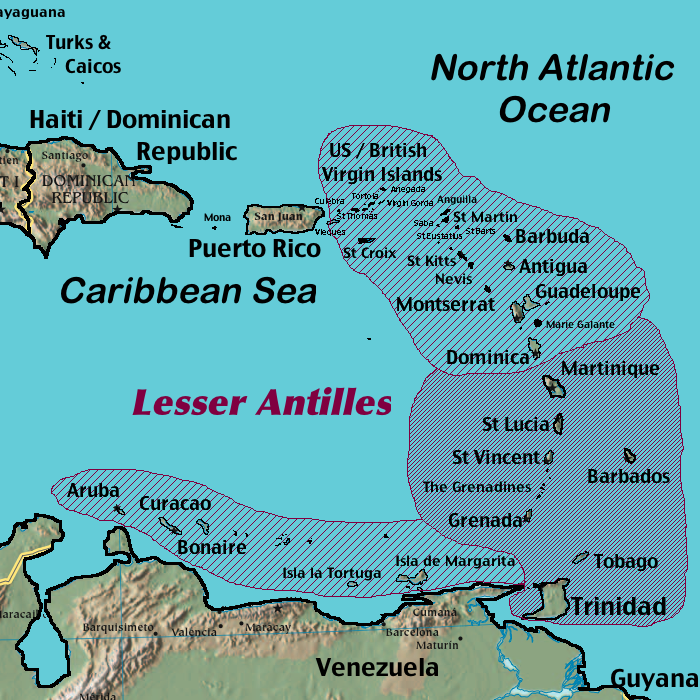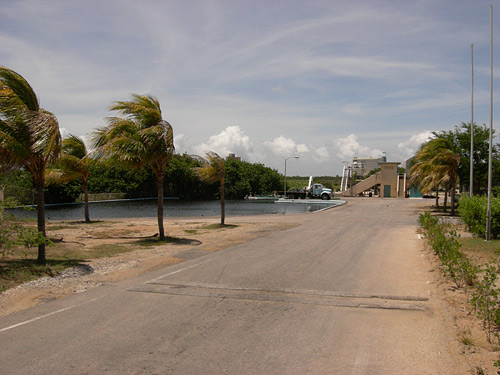
 Dragonflies & Damselflies of Aruba Theo Muusse - the Netherlands
Dragonflies & Damselflies of Aruba Theo Muusse - the Netherlands
General info & Species List - 2007.
  Dragonflies & Damselflies of Aruba Theo Muusse - the Netherlands Dragonflies & Damselflies of Aruba Theo Muusse - the Netherlands
General info & Species List - 2007. |
The island Aruba is part of the Lesser Antilles. There is no book about dragonflies of this island, but recently I received the new book of Carlos Esquivel, dealing with the dragonflies of the Caribbean.
The Lesser Antilles, also known as the Caribbees, are part of the Antilles, which together with the Bahamas and Greater Antilles form the West Indies. The islands are part of a long volcanic island arc, most of which wraps around the eastern end of the Caribbean Sea on the western boundary with the Atlantic Ocean, and some of which lies on the southern fringe of the sea just north of South America. The Lesser Antilles more or less coincide with the outer edge of the Caribbean Plate, and many of the islands were formed by subduction, as one or more other plates slipped under the Caribbean Plate.
Regional terminology
The Lesser Antilles can be divided into the Windward Islands in the south and the Leeward Islands in the north. (The prevailing winds in the region blow from south to north, thus hitting the Windward Islands first; the Leeward Islands, though on the Atlantic side of the chain, are more sheltered.) The Leeward Antilles arc are the southern Lesser Antilles just north of Venezuela in South America. In turn, the Netherlands Antilles are divided into the groups in the southwest and the northeast, with different naming conventions.
 Islands
IslandsThe main Lesser Antilles are (from north to south to west):
Leeward Islands:
• U.S. Virgin Islands: St. Thomas, St. John, St. Croix
• British Virgin Islands: Tortola, Virgin Gorda, Anegada, Jost Van Dyke
• Anguilla (UK)
• Saint Martin/Sint Maarten (France/Neth. Antilles)
• Saint-Barthélemy (Fr.)
• Saba (Neth.)
• Sint Eustatius (Neth.)
• Saint Kitts
• Nevis
• Barbuda
• Antigua
• Redonda
• Montserrat (UK)
• Guadeloupe (Fr.)
• La Désirade (Fr.)
• Les Saintes (Fr.)
• Marie-Galante (Fr.)
• Dominica
•
Windward Islands:
• Martinique (Fr.)
• Saint Lucia
• Barbados
• Saint Vincent
• Grenadines
• Grenada
• Trinidad and Tobago
•
Leeward Antilles – islands north of the Venezuelan coast (from west to east):
• Aruba (Neth.)
• Curaçao (Neth.)
• Bonaire (Neth.)
• Venezuelan archipelago
(from Wikipedia, the Free Web-encyclopedia).
Aruba's rolling landscapes are robust with cactus plants, aloe and distinctively-shaped divi divi trees, around which exists a thriving community of small wildlife. Aruba's semi-arid climate supports unique flora typically classified as desert, with cactus and brush plants standing in sharp contrast to the shimmering turquoise seas.
 Aruba's dry, desert-like rocky terrain is an ideal home for many four-legged animals, including wild donkeys and goats. Other intriguing creatures, such as iguanas and a variety of lizards also call the island home.
Aruba's dry, desert-like rocky terrain is an ideal home for many four-legged animals, including wild donkeys and goats. Other intriguing creatures, such as iguanas and a variety of lizards also call the island home.
Freshwater is very scarce on the island. Dragonflies therefor need to react on what is available. Within suburban areas some ponds can be found. These are small valleys on a rocky ground, filling with rain and/ or sewage water. Also, for the cattle, drinking puts have been made in the drier areas, holding water for most of the time. And when it rains, the flood plains on the eastern side of the island hold a lot of water, giving pioneers the chance to reproduce. But the largest amount of freshwater can be found at Bubali Bird Sanctuary.
At the Bubali ponds – a former saltpan now an artificial freshwater wetland fed by the effluent of a wastewater treatment plant – buttonwood and white mangroves thrive. Buttonwood trees, growing along the eastern shoreline of the larger pond, attract brown pelicans and cormorants diving for food in the deep waters of this lake. This is where the larger numbers of dragonflies can be found.
On Aruba, regarding dragonflies, I had to start with an empty sheet.
I did find a book about the Butterflies of Aruba (by Adolphe O Debrot and J Y Miller, available at the Butterfly Farm), but nothing has been published about the dragonflies. I spoke to Roselenn Croes, an employee of the Butterfly Farm, she told me that there are 7 species to be found here.
But after a week that number was already reached.
Later on (= one week before departure) I got a copy of Carlos Esquivel and he mentions more than 7 for the Lesser Antilles (42 species). Still, a list of species of Aruba had to be made by myself.
On this site you can find what I saw in the period of July 15 2007 until August 12 2007.
According to Carlos Esquivel’s new book, ‘Dragonflies and Damselflies of Middle America and the Caribbean’ , the following list for the Lesser Antilles has been substracted.
LESTIDAE:
Lestes forficula
Lestes spumarius
Lestes tenuatus
PROTONEURIDAE:
Protoneura ailsa
COENAGRIONIDAE:
Argia concinna
Enallagma coecum
Ischnura capreola
Ischnura hastata
Ischnura ramburii
Telebasis corallina
AESHNIDAE:
Anax amazili
Anax concolor
Anax junius
Coryphaeschna adnexa
Coryphaeschna viriditas
Gynacantha nervosa
Rhionaeschna psilus
Tryacanthagyna caribbea
Tryacanthagyna septima
LIBELLULIDAE:
Brachymesia furcata
Brachymesia herbida
Brechmorhoga praecox
Dythemis multipunctata
Dythemis sterilis
Erythemis attala
Erythemis credula
Erythemis vesiculosa
Erythrodiplax berenice (*)
Erythrodiplax fusca
Erythrodiplax umbrata
Erythrodiplax unimaculata
Macrothemis celeno
Miathyria marcella
Micrathyria aequalis
Micrathyria didyma
Orthemis ferruginae (**)
Pantala flavescens
Pantala hymenaea (*)
Scapanea archboldi
Sympetrum illotum (***)
(Sympetrum gilvum)
Tholymis citrina
Tramea abdominalis
Tramea calverti (*)
Tramea insularis
Tramea onusta
In bold are the species seen on Aruba by the observer.
(*) means seen on Aruba but not stated in the book (= new to the Lesser Antilles)
(**) means the observer disagrees the species seen on Aruba is ferruginae, but is discolor (or another species).
(***) means the observer saw a very good candidate of this unlikely species. No alternative present so far.